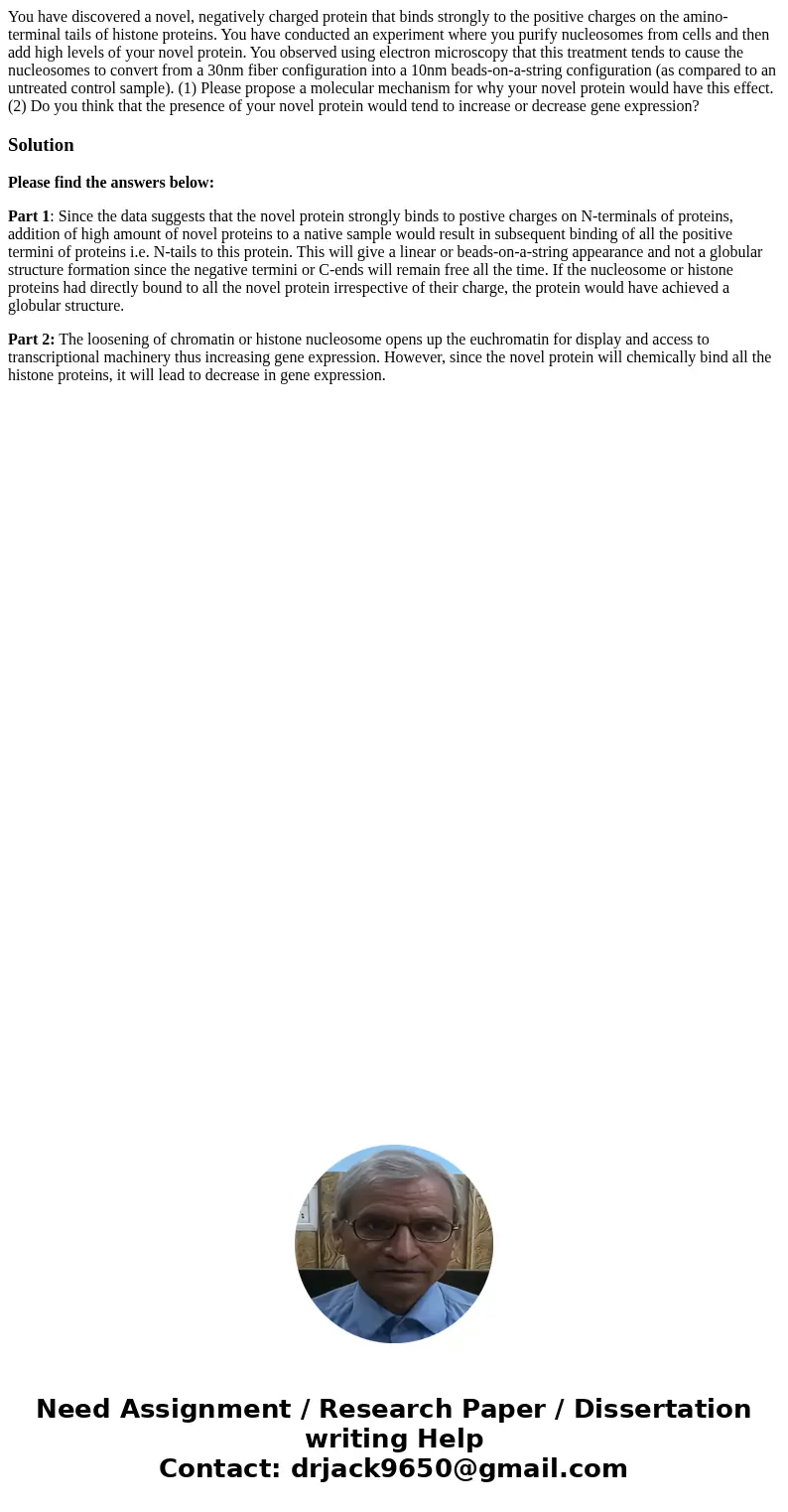You have discovered a novel negatively charged protein that
You have discovered a novel, negatively charged protein that binds strongly to the positive charges on the amino-terminal tails of histone proteins. You have conducted an experiment where you purify nucleosomes from cells and then add high levels of your novel protein. You observed using electron microscopy that this treatment tends to cause the nucleosomes to convert from a 30nm fiber configuration into a 10nm beads-on-a-string configuration (as compared to an untreated control sample). (1) Please propose a molecular mechanism for why your novel protein would have this effect. (2) Do you think that the presence of your novel protein would tend to increase or decrease gene expression?
Solution
Please find the answers below:
Part 1: Since the data suggests that the novel protein strongly binds to postive charges on N-terminals of proteins, addition of high amount of novel proteins to a native sample would result in subsequent binding of all the positive termini of proteins i.e. N-tails to this protein. This will give a linear or beads-on-a-string appearance and not a globular structure formation since the negative termini or C-ends will remain free all the time. If the nucleosome or histone proteins had directly bound to all the novel protein irrespective of their charge, the protein would have achieved a globular structure.
Part 2: The loosening of chromatin or histone nucleosome opens up the euchromatin for display and access to transcriptional machinery thus increasing gene expression. However, since the novel protein will chemically bind all the histone proteins, it will lead to decrease in gene expression.

 Homework Sourse
Homework Sourse